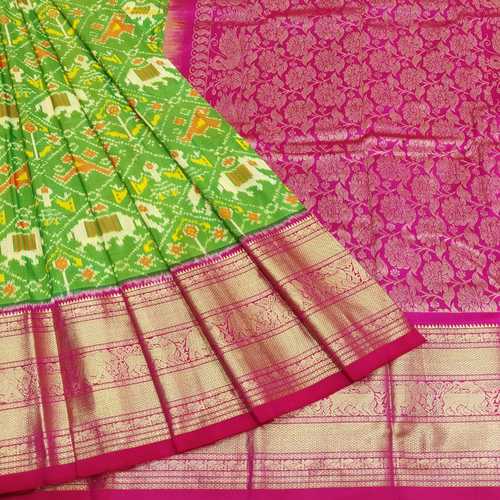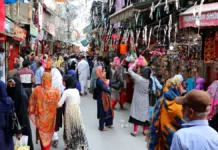A symbol of elegance and tradition in Indian clothing, the sari is a story of craftsmanship, tradition and cultural nuance. Among the many sarees that grace the Indian landscape, Pochampally and Ikat sarees stand out for their intricate designs and vibrant colours. However, there are widespread misconceptions about their compatibility. Are Pochampally and Ikat sarees really the same? Set on a journey to discover the unique properties that characterize these two iconic fabrics.
Origin and Heritage
The picturesque village of Pochampalli in Telangana, India, is where Pochampally sarees got their start. The geometric patterns, vibrant colours and knitting and dyeing methods of pochampally sarees are what set them apart. It mirrors the variety and extravagance of the local culture.
Ikkat sarees come from various parts of India like Andhra Pradesh, Odisha and Gujarat. The expression “ikkat” itself comes from the Indonesian word “mengikat,” which generally means tie, featuring the complicated colouring process utilised in the development of these sarees
Weaving Technique
Both Ikat and Pochampally sarees have unique yet similar winding techniques. They use a similar colouring strategy namely the “twofold ikat” strategy. This procedure includes colouring the weave and twist in batik, and testing the accuracy and expertise of the weaver. Pochampally sarees utilise the ‘single tie’ procedure where the weft or twist yarn is coloured before winding around, in this manner making various examples.
Design and Patterns
Pochampally and Ikkat sarees capture the embodiment of their craftsmanship. Pochampally sarees frequently have striking, even plans like precious stones, checks and waves, woven into the texture. Interestingly, Ikkat sarees have many examples, from blossoms and creatures to mathematical shapes, mirroring the various societies of their starting era.
Colour Palette
The colour scheme of Pochampally and Ikkat sarees is one of their distinguishing characteristics. The Pochampally saree is well-known for its vibrant colour combinations that stand out and captivate the eye. Brilliant shades of red, yellow, blue and green are in many cases utilised on unique Pochampally sarees, overflowing a bubbly energy. Presently discussing Ikkat sarees, show a more adjusted way to deal with variety, with curbed tones and natural tints overwhelming the range, lending an immortal polish to the clothing.
Cultural Significance
Both Pochampally and Ikkat sarees hold significant social importance in the Indian setting, going past their tasteful charm. Pochampally sarees are profoundly cultivated in the social guide of Telangana, displaying the imaginative ability of the weavers and their immovable obligation to not let down age-old customs. Very much like that, Ikkat sarees act as a demonstration of India’s rich material legacy, getting around the nearby limits to ascend as a feeling of national pride.
Conclusion
Pochampally and Ikkat sarees share numerous likenesses whether it is their tie and dye procedure or be it their social importance. These sarees are characterized by their winding around strategies, plan appeal and, utilization of varieties. Ikkat sarees are known for their understated elegance and timeless charm, whereas Pochampally sarees exude a sense of vivacity and exuberance.
We gain a deeper appreciation for the artistry and craftsmanship contained within each intricately woven thread by delving into the nuances of these iconic sarees. Thus, the following time you end up in a Pochampally or Ikkat saree, recollect the rich embroidery of custom and culture that you convey with beauty.
Also Read: Tamannaah Bhatia stuns fans in gorgeous emerald green saree







